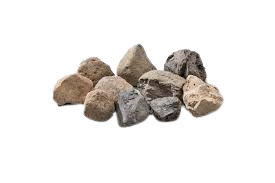Project Report For Calcined Bauxite
Introduction
Project report for calcined bauxite is as follows.
China currently supplies 60% of the calcined bauxite utilised in India. Due to the growth of domestic steel production, a lack of bauxite of a quality acceptable for use in India from China, and rising import costs, efforts are currently underway in India to generate high-grade bauxite from domestic bauxite sources.
Despite possessing high-grade bauxite deposits on its west coast and in its interior, India presently produces very little non-metallurgical bauxite. This is owing to a lack of testing of high-quality bauxite resources outside of Gujarat’s principal bauxite-producing region. There is lots of room for new business owners due to the product’s strong demand growth.

Calcined bauxite is made by sintering high-alumina bauxite at high temperatures in rotary, round, or shaft kilns. Calcined Bauxite has a high alumina concentration and refractoriness, low iron, grain hardness, and toughness due to the process of calcining (heating) bauxite in kilns. Calcined Bauxite is an attractive raw material for numerous refractory, abrasive, and specialty product applications due to its thermal stability, high mechanical strength, and resistance to molten slags.
Calcined bauxite is a critical raw material for two primary products: refractory and abrasives. Other applications, such as proppant, welding fluxes, and antiskid surfaces, require smaller amounts. While the underlying calcining method for each of these applications is the same (i.e., the same basic burning process), the physical and chemical properties of each grade differ. The principal end uses of calcined bauxite are abrasive and refractory.
Get Completely Custom Bankable Project Report
Calcined Bauxite production, consumption, revenue (million USD), market share, and growth rate from 2012 to 2022 (forecast), covering North America, Europe, China, Japan, Southeast Asia, and India. Key manufacturers compete in the global Calcined Bauxite market, with production, price, revenue (value), and market share for each; top companies are Futong Industry, LKAB Minerals, Baud Minerals, Plomp Mineral Services, and Omnicrete.
This research provides the production, revenue, price, market share, and growth rate of each product type, which is basically divided into 1mm,1-3mm, 3-5mm, and >5mm.
This study focuses on the status and outlook for major applications/end users, consumption (sales), market share, and development rate for each application, such as Abrasive, Cement, Metallurgy, and Refractory.
Market Potential Of Calcined Bauxite
The market for calcined bauxite was estimated at US$ 1.48 billion in 2020, and from 2021 to 2027, it is anticipated that the market will generate close to US$ 2.27 billion, with a CAGR of 6.3%.
Expenses

Product Cost Breakup

Reveneue Vs Expenses

Market Trend

A large deposit of laterite and bauxite is present throughout the nation, and India is ranked fifth on the global bauxite map. Despite the existence of sizable bauxite resources, high-quality bauxite deposits are rare. Gujarat leads the world in bauxite resources and output that is high in alumina and appropriate for the high-value refractory and abrasive industries.
However, the substantial calcium component in this bauxite reduces its value for the refractory industry. Maharashtra and Central India (Chhattisgarh, Jharkhand, and Madhya Pradesh) are home to several high aluminas and high titania deposits, while tiny dispersed quantities are mined throughout the rest of the nation.
The non-metallurgical grades are frequently made up of carefully chosen, high-quality bauxite from deposits of metal grade, which typically fetch higher prices. It has become vital to adopt an appropriate beneficiation method due to the quick depletion of good-grade bauxite resources, primarily to reduce the iron and titania content in Indian bauxite. After Guyana, India, and Russia, China is currently the world’s largest supplier of refractory bauxite.
India has more than 3 billion tonnes of bauxite reserves, placing it fifth in the world. The majority of these deposits, especially those in India’s Eastern Ghats, are ideal for the manufacture of alumina. High quality bauxite that is appropriate for the refractory and abrasive industries is scarce.
Bauxite with high alumina content, low iron content, and low titanium content is found in the state of Gujarat and is frequently used for calcination in the abrasive and refractory sectors.

